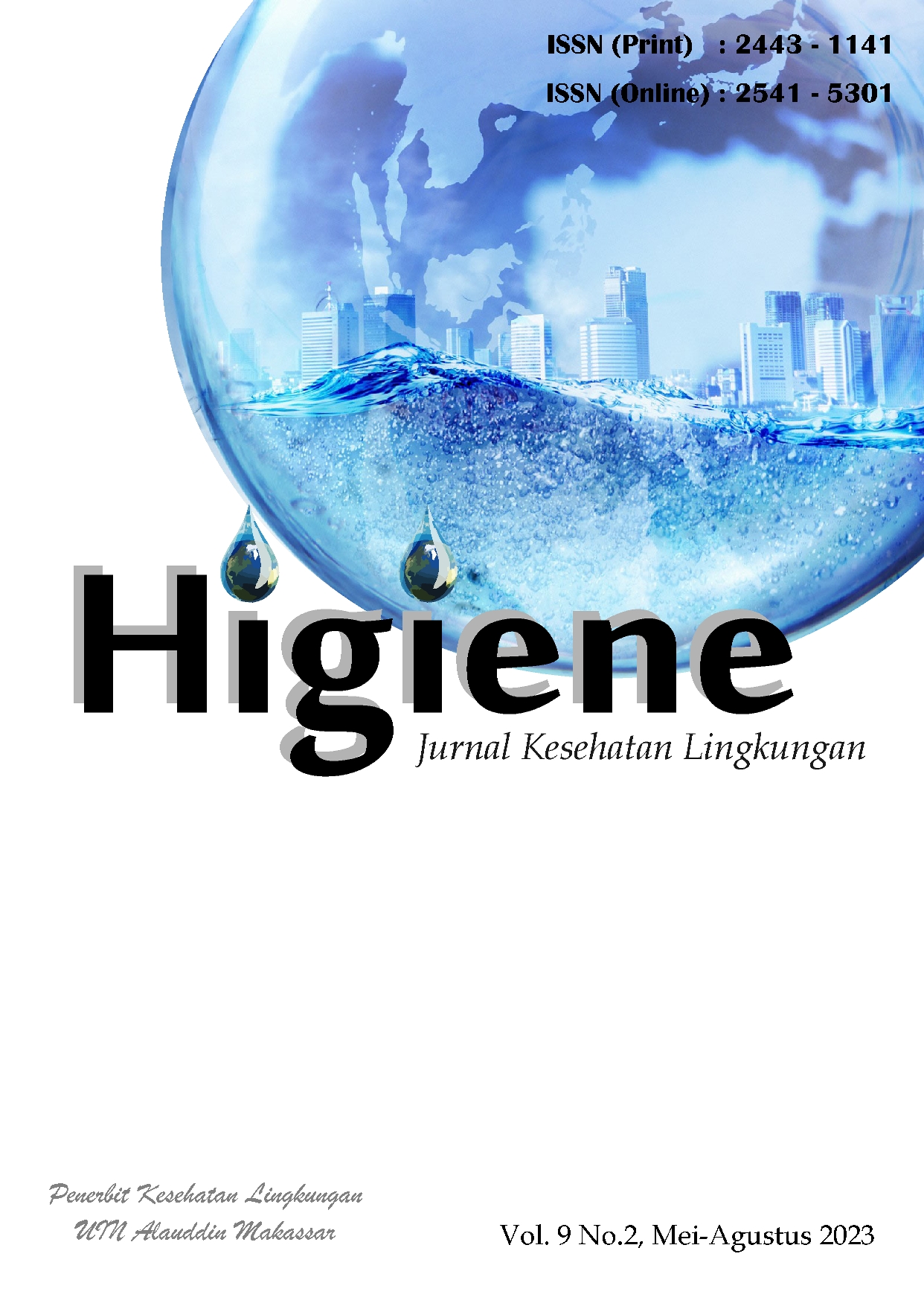Hubungan Data Surveilans dengan Data Google Trends Penyakit Demam Berdarah Dengue di Sulawesi Tenggara, Indonesia
Abstract
Dengue Hemorrhagic Fever (DHF) is a disease caused by dengue virus infection through the Aedes mosquitoes bites, especially Aedes aegypti. This study aims to analyze surveillance data with google trends data on dengue hemorrhagic fever in Southeast Sulawesi. This research is a quantitative research with a descriptive approach using time series data. Google search trend in the form of 'DHF Symptoms' has a correlation with DHF cases with r= 0.697. Time series Google Trends data shows a linear pattern related to surveillance data. Time series Google Trends data shows a linear pattern related to surveillance data where the highest correlation occurs in the entire period of DHF cases with Google Trends 'DHF symptoms', namely 0.697*.
Keywords : Google trends, dengue hemorrhagic fever, surveillance.
References
Hotez, P. J., Aksoy, S., Brindley, P. J., & Kamhawi, S. (2020). What constitutes a neglected tropical disease? PLoS Neglected Tropical Diseases, 14(1), 1–6. https://doi.org/10.1371/JOURNAL.PNTD.0008001
Husnayain, A., Fuad, A., & Lazuardi, L. (2019). Correlation between Google Trends on dengue fever and national surveillance report in Indonesia. Global Health Action, 12(1), 1552652. https://doi.org/10.1080/16549716.2018.1552652
Irma, I., & Masluhiya AF, S. (2021). Trend Penyakit Demam Berdarah Dengue (DBD) di Sulawesi Tenggara Berbasis Ukuran Epidemiologi. JUMANTIK (Jurnal Ilmiah Penelitian Kesehatan), 6(1), 70. https://doi.org/10.30829/jumantik.v6i1.7968
Kemenkes RI. (2017). Data dan Informasi Profil Kesehatan Indonesia 2016, Jakarta : Kementerian Kesehatan RI. https://www.kemkes.go.id/downloads/resources/download/pusdatin/profil-kesehatan-indonesia/Profil-Kesehatan-Indonesia-tahun-2017.pdf
Kemenkes RI. (2019). Data dan Informasi Profil Kesehatan Indonesia 2019, Jakarta : Kementerian Kesehatan RI. https://www.kemkes.go.id/downloads/resources/download/pusdatin/profil-kesehatan-indonesia/Profil-Kesehatan-Indonesia-2019.pdf
Mardiana, M. (2019). Pengaruh Media Sosial Terhadap Tingkat Pidana Narkotika di Sulawesi Tenggara. Communicatus: Jurnal Ilmu Komunikasi, 2(2), 101–108. https://doi.org/10.15575/cjik.v2i2.3659
Ofori, D. A., Anjarwalla, P., Mwaura, L., Jamnadass, R., Stevenson, P. C., Smith, P., Koch, W., Kukula-Koch, W., Marzec, Z., Kasperek, E., Wyszogrodzka-Koma, L., Szwerc, W., Asakawa, Y., Moradi, S., Barati, A., Khayyat, S. A., Roselin, L. S., Jaafar, F. M., Osman, C. P., … Slaton, N. (2020). Prevalence of Entamoeba histolytica infection among primary school children in five selected communities of wushishi local government area, Niger estate, Nigeria. Fudma Journal of Sciences, 4(3), 663–667. https://doi.org/https://doi.org/10.33003/fjs-2020-0403-422
Padmonobo, H., Setiani, O., & Joko, T. (2013). Hubungan Faktor-Faktor Lingkungan Fisik Rumah dengan Kejadian Pneumonia pada Balita di Wilayah Kerja Puskesmas Jatibarang Kabupaten Brebes. Jurnal Kesehatan Lingkungan Indonesia; Vol 11, No 2 (2012): Oktober 2012. https://doi.org/10.14710/jkli.11.2.194 - 198
Safitri, W. R. (2016). Analisis Korelasi Pearson Dalam Menentukan Hubungan Antara Kejadian Demam Berdarah Dengue Dengan Kepadatan Penduduk Di Kota Surabaya Pada Tahun 2012 - 2014: Pearson Correlation Analysis to Determine The Relationship Between City Population Density with Incident Dengue Fever of Surabaya in The Year 2012-2014. Jurnal Ilmiah Keperawatan (Scientific Journal of Nursing), 2(2), 21-29. Retrieved from https://journal.stikespemkabjombang.ac.id/index.php/jikep/article/view/23
Salathé, M. (2018). Digital epidemiology: what is it, and where is it going? Life Sciences, Society and Policy, 14(1), 1. https://doi.org/10.1186/s40504-017-0065-7
Strauss, R. A., Castro, J. S., Reintjes, R., & Torres, J. R. (2017). Google dengue trends: An indicator of epidemic behavior. The Venezuelan Case. International Journal of Medical Informatics, 104, 26–30. https://doi.org/10.1016/j.ijmedinf.2017.05.003
Susilawaty, A., Ekasari, R., Widiastuty, L., Wijaya, D. R., Arranury, Z., & Basri, S. (2021). Climate factors and dengue fever occurrence in Makassar during period of 2011–2017. Gaceta Sanitaria, 35, S408–S412. https://doi.org/10.1016/j.gaceta.2021.10.063
Tosepu, R., Tantrakarnapa, K., Nakhapakorn, K., & Worakhunpiset, S. (2018). Climate variability and dengue hemorrhagic fever in Southeast Sulawesi Province, Indonesia. Environmental Science and Pollution Research, 25(15), 14944–14952. https://doi.org/10.1007/s11356-018-1528-y
World Health Organization. Regional Office for South-East Asia. (2011). Comprehensive Guideline for Prevention and Control of Dengue and Dengue Haemorrhagic Fever. Revised and expanded edition. WHO Regional Office for South-East Asia.
Copyright (c) 2023 HIGIENE: Jurnal Kesehatan Lingkungan

This work is licensed under a Creative Commons Attribution 4.0 International License.


